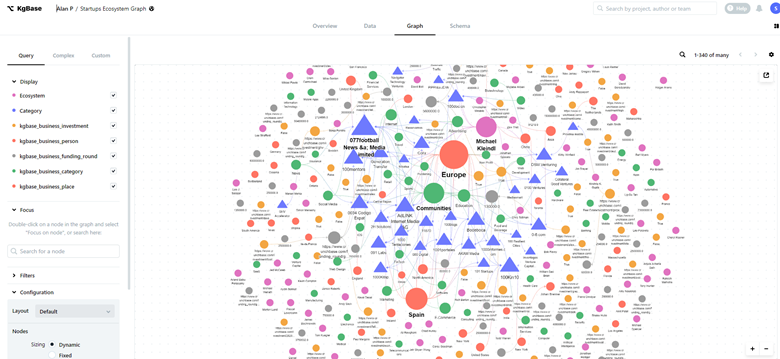A Comprehensive Guide to Implementing Scalable Data Sources Without the Demand for Coding Competence
In the contemporary landscape of data monitoring, the capacity to carry out scalable databases without coding experience is becoming increasingly necessary for organizations of all dimensions. What are the critical aspects that can absolutely encourage these individuals to take advantage of scalable data sources successfully?
Comprehending Scalable Data Sources
In the realm of contemporary information management, scalable databases have become an important option for companies seeking to deal with raising quantities of information efficiently. These databases are designed to fit development by permitting the seamless enhancement of resources, whether with straight scaling (including extra equipments) or upright scaling (updating existing devices) This adaptability is necessary in today's hectic digital landscape, where information is produced at an unmatched rate.
Scalable databases usually utilize dispersed architectures, which enable data to be spread out across multiple nodes. This circulation not only boosts efficiency yet likewise provides redundancy, ensuring information availability also in the occasion of hardware failures. Scalability can be a crucial factor for various applications, consisting of ecommerce platforms, social networks networks, and large data analytics, where user need can fluctuate considerably.
In addition, scalable databases frequently include durable data consistency versions that stabilize efficiency and dependability. Organizations must consider their certain requirements, such as read and create speeds, data integrity, and fault resistance when selecting a scalable data source solution. Ultimately, understanding the underlying concepts of scalable data sources is necessary for services intending to prosper in a progressively data-driven world.
Key Functions to Seek
When reviewing scalable data sources, a number of vital functions are paramount to ensuring ideal performance and integrity. First and primary, take into consideration the design of the database. A dispersed design can boost scalability by enabling data to be stored across several nodes, promoting seamless information access and processing as need boosts.
Another essential function is data partitioning, which allows efficient monitoring of big datasets by dividing them into smaller sized, a lot more workable items (no-code). This method not just enhances performance but likewise streamlines source appropriation
In addition, seek durable duplication abilities. This attribute ensures data redundancy and high accessibility, decreasing downtime throughout maintenance or unforeseen failings.
Efficiency tracking tools are also necessary, as they supply real-time insights into system wellness and functional efficiency, enabling timely modifications to preserve optimum performance.

User-Friendly Data Source Tools
Simplicity is a crucial component in the style of straightforward data source tools, as it enhances access for customers with differing levels of technological know-how. no-code. These tools focus on instinctive interfaces, allowing users to create, take care of, and question databases without requiring comprehensive programming knowledge
Key functions normally include drag-and-drop functionality, visual information modeling, and pre-built templates that streamline the setup procedure. Such tools usually provide guided tutorials or onboarding procedures that assist in user interaction and reduce the understanding contour. Additionally, seamless integration with preferred data sources and services makes sure that users can easily import and export data, better simplifying procedures.

In addition, robust support and community sources, such as online forums and documents, boost the user experience by providing support when required. On the whole, easy to use data source devices equip companies to harness the power of scalable data sources, making information administration easily accessible to everybody involved.
Step-by-Step Implementation Overview
Exactly how can organizations properly implement scalable databases to meet their growing data requirements? The procedure starts with identifying details information requirements, consisting of the quantity, range, and speed of data that will certainly be refined. Next, companies should examine user-friendly database tools that use scalability attributes, such as cloud-based options or managed database solutions.
When the best tool is chosen, the following action involves setting up the data source setting. This includes setting up circumstances, defining user permissions, and developing information structures that straighten with company goals. Organizations ought to then migrate existing data right into the brand-new system, making sure information integrity and marginal interruption to procedures.
Post-migration, carrying out thorough testing is essential; this includes performance screening under various load conditions to make certain the system can manage future development - no-code. Additionally, it is important to educate personnel on the database management user interface to facilitate seamless use
Ideal Practices for Administration
Reliable monitoring of scalable data sources calls for a strategic technique that prioritizes recurring surveillance and optimization. To attain this, organizations must apply durable surveillance devices that provide real-time understandings into database efficiency metrics, such as question feedback times, source utilization, and transaction throughput. On a regular basis additional hints evaluating these metrics can help you could look here identify traffic jams and areas for improvement.

Routine backups and disaster recuperation plans are vital to protect information honesty and schedule. Establishing a regular for evaluating these backups will certainly make certain a trustworthy recovery procedure in situation of an unforeseen failing.
Furthermore, efficiency tuning must be a constant process. Adjusting indexing approaches, optimizing questions, and scaling resourcesâEUR" whether vertically or horizontallyâEUR" will aid maintain optimum performance as use demands advance.
Finally, cultivating a culture of expertise sharing amongst employee will allow constant understanding and adjustment, making certain that the monitoring of scalable databases stays effective and effective with time.
Verdict
To conclude, the application of scalable databases can be properly accomplished without coding proficiency through the usage of user-friendly user interfaces and user-friendly tools. By adhering to the outlined techniques for setup, data migration, and performance testing, individuals can browse the complexities of database management easily. Stressing best practices for continuous maintenance and cooperation further boosts the capability to manage scalable data sources efficiently in a rapidly progressing data-driven atmosphere.
In the contemporary landscape of More Info data monitoring, the ability to apply scalable databases without coding expertise is coming to be increasingly important for companies of all sizes.In the realm of contemporary information monitoring, scalable databases have arised as an essential solution for companies seeking to take care of raising volumes of information effectively.Furthermore, scalable databases typically include durable information consistency versions that balance performance and integrity.Exactly how can companies effectively implement scalable data sources to satisfy their expanding information demands? Next, organizations need to assess user-friendly database tools that use scalability features, such as cloud-based services or handled database services.
Comments on “No-Code Open System Database Creation: Equipping Companies to Build Faster”